
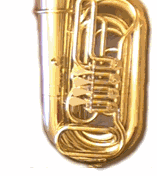
|
Welcome to the Tuba in Russia website, the first Russian web-project dedicated to this beautiful instrument. If you are interested in anything tuba related-in Russia, please contact Mr. Alexey Tcharykov at tuba@ruz.net. The site is mostly in Russian language, but we are proud to present in this international section the work by the worldwide-known tuba enthusiast and historian from Moscow, Alexei Levashkin, "A short history of the tuba in Russia", as it published in Brass Bulletin magazine, N107, 3-1999. German (Deutsch), French (Franзaise), Italian (Italiano), Spanish (Espaсol) translations and original Russian version are also available from our site.
A short history of the tuba in Russia Alexei Levashkin English Translation by Jeffrey Agrell
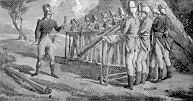 Let's begin our journey at the beginning of the 19th century in an amazing Russia where hunting horn groups that were unique in the world still existed. Let's begin our journey at the beginning of the 19th century in an amazing Russia where hunting horn groups that were unique in the world still existed.Made up of 16 to 36 players, (most often recruited from among the hundreds of servants of the court, who were rather unmusical...), each was trained to play a single unique note (one man, one tube, one note!). It was a kind of living organ with people in the place of keys. Entire pieces (including opera overtures!) could thus be played, and the scores resembled rolls for mechanical pianos. It was Czech hornist Johann Anton Maresch (1719-1794), student of Hampel and engaged at the Russia court, who in 1751 came up with the idea and developed this musical curiosity to satisfy the wishes of the Empress Elisabeth (1709-1762). (See Johann Christian Hinrichs, "Entstehung, Fortgang und ietzige Beschaffenheit der russischen lagdmusik", St. Petersburg, 1796; reprinted in facsimile edition by the Zentralantiquariat der DDR, Leipzig 1974; the instruments are preserved in the St. Petersburg Musical Instrument Museum). From the Russian hunting horn to the modern tuba During the first half of the 19th century the bass horn, serpent, "Russian bassoon" (a kind of bassoon with a brass mouthpiece) and ophicleide were the precursors of the tuba in Russia. The Russian market for brass instruments was then mainly in the hands of the Czech maker V. F. Cerveny, who founded his own factory in 1842 in Hradec Kralove. He was an inventive manufacturer whose success is recounted in a booklet published in 1906 on the occasion of the first "Russian Exposition of Musical Instruments". The helicon (which winds around the upper body) was supposedly invented in Russia ca. 1845. This invention was taken up four years later by the Viennese Ignaz Stowasser, who launched production of this model, which was very practical for infantry or cavalry bands.
After the nobility, the army and the revolution During 1860-70 there existed in the Russian Army the "Wurm Band", so named after Wilhelm Wurm (1826-1906), a German trumpeter and conductor living in Russian, who recommended instruments in С and in F. Now, as military bands commonly used instruments in different keys played by bad musicians (who also hardly practiced), it is not surprising that the intonation was doubtful at best. A reform of military bands undertaken between 1874 and 1876 attempted to put an end to this cacophony by using instruments pitched only in Bb or Eb. It should be noted that one of the leaders of this reform was none other than Nikolai Rimsky-Korsakov, who was then inspector of navy choirs. The maker Cerveny also participated in a significant way in the modernization of the equipment of military bands. After the revolutions, wars and other disruptions at the beginning of the 20th century, Russia also had to reconstruct its musical life: theaters, orchestras, conservatories... But above all it was the instrumental manufacture in factories and workshops that was affected, with techniques and traditions being lost. Even though the tubas produced by the [nationalized] "wind instrument factory of Leningrad" (made from the old "Zimmermann" workshops) were clearly inspired by the old "Zimmermann" models, they had to be developed from scratch, so to speak, the diagrams and equipment having disappeared in the upheaval... The tubas in Bb were and are still standard instruments for Russian tubists. But in recent years Russia has imported more and more instruments of the major foreign brands. Some orchestras are even ordering tubas in F or Eb in order to broaden possibilities and reduce performance problems in orchestral passages. The first tubists in Russia: a German quasi-monopoly The oldest information on Russian tubists is deposited in the "Annals of the Imperial Theaters", published between 1890 and 1915. These documents (tributes or obituaries) offer unique information on the musicians. For example, tubist Wilhelm Schцnekerl appears in the list of orchestral musicians of the St Petersburg Opera for the 1890-91 season. Engaged in 1861 "to play the ophicleide", he appeared in 1865 under the denomination "tubist". He belonged then to the generation of musicians who made the transition from ophicleide to tuba, a kind of "last Mohican". In 1890-91 in the Ballet Orchestra, one Wilhelm Hoppe (engaged in 1884; passed away 10 years later) held the position as tubist. His successor would be Karl Tormann, who held the spot until 1907. The list of artists of the Moscow Bolschoi Theater for the 1890-91 season includes tubist Hermann Tцpfer. In other documents, there is some mention of tubists Hubert et Saalborn... in short, the musicians came mainly from Germany, Austria, and other countries rich in traditions and experience. The Russian Czar and Czarina, themselves belonging to noble European families, constantly engaged foreign specialists, e.g. Franz Turner (mentioned above), or Christopher Bork (Borch) (1832-1916), teacher of trombone, tuba and percussion at the Moscow Conservatory between 1875 and 1916. The tuba becomes imperial
(To be continued: Part 2 and conclusion. The new generation of Russian tubists; Vladislav M. Blazhevich, I. Mathekho, Lebedev, etc.)
|
|
© The "TUBA IN RUSSIA" site (http://www.tuba.org.ru) - Alexey Tcharykov (idea, brand, content and programming), 1999-2000. All rights reserved. Copying of any materials of this site without prior agreement is prohibited. Please inform us about any links to this site on your pages or off-line media.
© Design and logo - Alexey Tcharykov, Rusign Internet-atelier, 1999-2000.Hosted by TOR-Info. Dialup service by RTS-connect. The part of ruz.net family. |
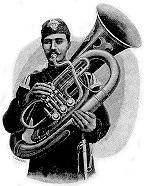
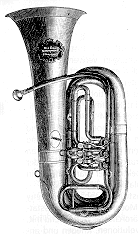
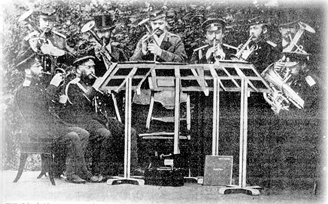
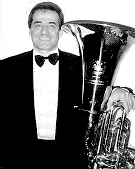 The author, Alexei Levachkine, was born in 1946 in Moscow. He studied tuba between 1963 to 1977 (with interruptions) at the Gnessine Institute with B. Grigoriev and V. Dosadine. From 1973 to 1981 he worked in various orchestras and bands. Between 1981 and 1985 he played in the National Symphony Orchestra in Moscow under the direction of V. Doudarova. Since 1985 he has been a member of the National Orchestra of Russia under the direction of Evgueny Svetlanov.
The author, Alexei Levachkine, was born in 1946 in Moscow. He studied tuba between 1963 to 1977 (with interruptions) at the Gnessine Institute with B. Grigoriev and V. Dosadine. From 1973 to 1981 he worked in various orchestras and bands. Between 1981 and 1985 he played in the National Symphony Orchestra in Moscow under the direction of V. Doudarova. Since 1985 he has been a member of the National Orchestra of Russia under the direction of Evgueny Svetlanov.